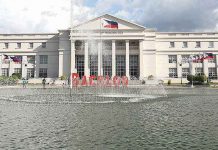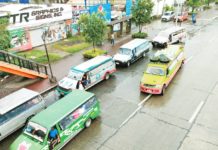ILOILO City – The government was right to temporarily close off Boracay to tourists, according to the National Economic and Development Authority (NEDA).
President Rodrigo Duterte ordered the shutdown of the island resort to pave the way for rehabilitation.
He approved the recommendation of the Interior, Tourism and Environment departments to close Boracay for six months starting April 26.
NEDA Region 6 lauded the government’s “decision to swiftly and effectively carry out corrective measures for the sustainable use and management of the island.”
“Notwithstanding its social and economic impact,” the Boracay closure “will pave the way for the rehabilitation and improvement of the solid waste management and sewerage systems, along with the protection of ecologically fragile areas in the island,” NEDA-6 said in a statement.
It expects the rehabilitation during and after the temporary closure to “revitalize” the island’s tourism industry, “making it more sustainable,” said the agency.
NEDA secretary Ernesto M. Pernia agreed with NEDA-6.
“Right now we must look into the future and take a concerted effort to improve the conditions of Boracay,” he said.
“We must restore its beauty, which has captivated and drawn people from all over the world for a long time,” Pernia added.
NEDA is the Philippines’ premier socioeconomic planning body.
An authority in macroeconomic forecasting and policy analysis and research, it provides high-level advice to policymakers in Congress and the executive branch.
State personnel and resources were “being mobilized to carry out a comprehensive rehabilitation plan” for Boracay, NEDA-6 assured.
“Such plan will adopt guidelines that will take into consideration the island’s environmental characteristics, carrying capacity and legal concerns following Presidential Proclamation No. 1064 signed in 2006,” said the agency.
Proclamation No. 1064, series of 2006 classifies Boracay Island as a forestland for protection purposes, and an alienable and disposable agricultural land, pursuant to Presidential Decree No. 705, or the Revised Forestry Reform Code of the Philippines.
The provincial government of Aklan has “started removing illegal structures, checking infrastructure and connections, and issuing notices for violations of easement provisions,” said NEDA-6.
“Emergency responses have been lined up to take care of vulnerable groups that will be mostly affected by the closure, including workers, families, students, indigenous peoples, fisherfolk, farmers, traders, and transport stakeholders,” it said.
Meanwhile the Armed Forces of the Philippines is beefing up security in Boracay as the six-month closure looms.
A total of 200 personnel from the Philippine Army’s 301st Infantry Brigade (IB) and the Philippine Navy will help the local police in case there will be resistance to the closure order starting April 26.
Thirty were from the Navy, 60 from the Civilian Armed Force Geographical Unit, while the rest were from explosive and ordnance, K9 and intelligence units of the Miag-ao, Iloilo-based 12th Infantry Battalion.
During the closure, the Army and Navy officers will help take care of “minor incidents,” clarified Brigadier General Pio Diñoso, 301st IB commander.
According to Diñoso, the government is trying to resolve environmental – not security – problems.
“We don’t want this to shift or escalate to a security one,” he said. “We do not foresee naman na mayroong security problem tayo na ma-encounter. Mga minor siguro, more on criminality.”
Armed Forces personnel will stay there until the island resort reopens.
Those sent to Boracay were all reserved officers. Their deployment will not affect other military operations, Diñoso assured.
Earlier the Police Regional Office 6 (PRO-6) sent 610 personnel to Boracay.
Metro Boracay Task Force will secure the island during the closure. It is led by Senior Superintendent Jesus Cambay Jr., PRO-6 deputy director for operations, as commander. (With Ime Sornito/PN)





